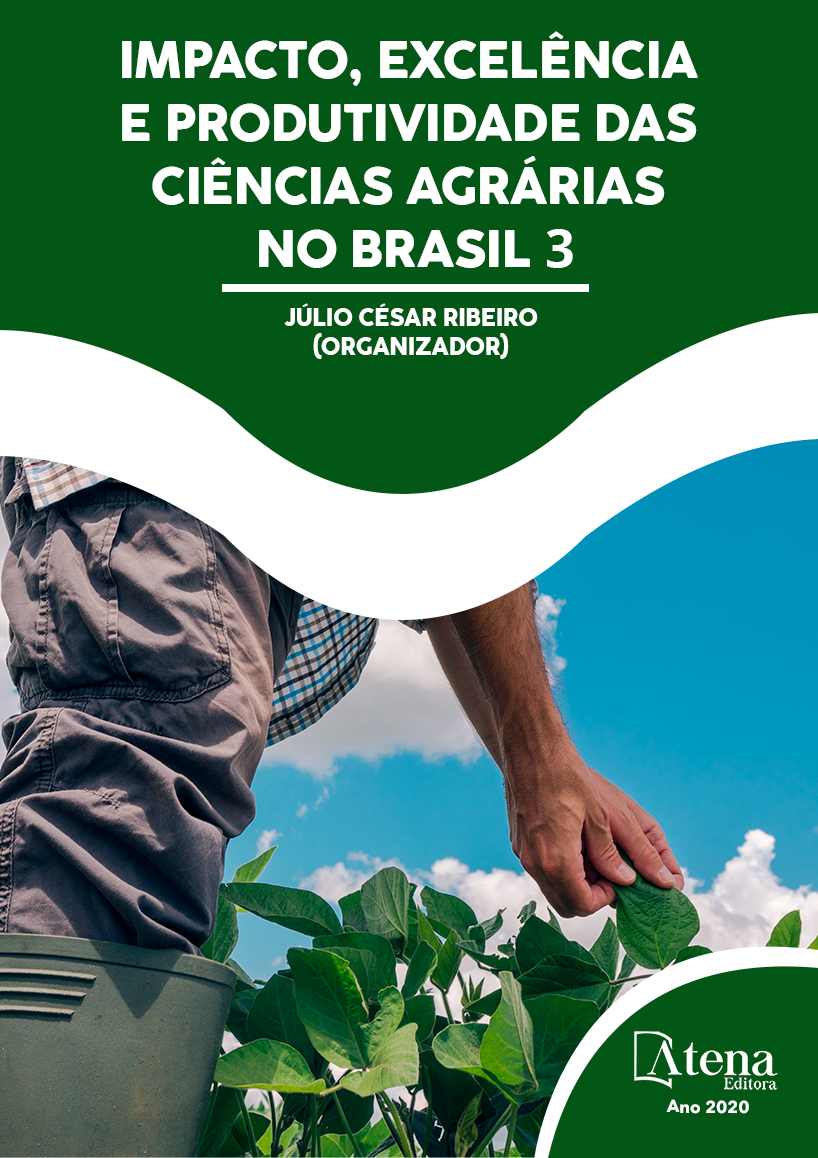
TEOR NUTRICIONAL NA FOLHA E NO FRUTO DE PIMENTÃO FERTIRRIGADO, EM FUNÇÃO DE TENSÕES DE ÁGUA NO SOLO E DOSES DE NITROGÊNIO
Em vista da carência de informações técnicas sobre o cultivo de pimentão fertirrigado na região norte, este trabalho avaliou concentrações de macronutrientes e micronutrientes em folhas e frutos de plantas de pimentão submetidas a tensões de água no solo e doses de nitrogênio via fertirrigação. O experimento foi conduzido em casa de vegetação na fazenda experimental de Igarapé Açu, UFRA. O híbrido utilizado foi o DAHRA RX no espaçamento 1,0 m por 0,50 m, utilizando o delineamento experimental de blocos casualizados em esquema fatorial 5x4, com três repetições. Os tratamentos foram constituídos por cinco tensões de água no solo (15, 25, 35, 45 e 65 kPa) como indicativo do momento de irrigar e por quatro doses de nitrogênio (0, 135, 265 e 395 kg ha-¹). O teor de macro e micronutrientes nas folhas e nos frutos foi analisado aos 72, 92 e 112 DAT. Foi coletada a folha fisiologicamente madura entre o florescimento e a metade do ciclo. Para análise, foi coletada folhas das cinco plantas da área útil de cada tratamento. O material foliar foi seco em estufa a 65⁰C e enviadas ao laboratório. As concentrações médias de N, P, K, Na, Ca e Mg, foram, nesta ordem, nas folhas e nos frutos, N>Ca>K>Mg>P>Na e N>K>P>Ca>Mg>Na, respectivamente. Já as concentrações médias de Fe, Zn, Cu e Mn, foram, nesta ordem, nas folhas e nos frutos, Fe>Zn>Mn>Cu e Fe>Zn>Cu>Mn, respectivamente. Perante a escassez de informações sobre tensões de água no solo e doses de nitrogênio na cultura do pimentão para a região norte do Brasil, obtêm-se níveis adequados dos macronutrientes (N e Ca) e micronutrientes (Fe e Mn) nas plantas de pimentão. Dessa forma, evitam-se condições de deficiência nutricional, o que pode contribuir para um bom rendimento da cultura.
TEOR NUTRICIONAL NA FOLHA E NO FRUTO DE PIMENTÃO FERTIRRIGADO, EM FUNÇÃO DE TENSÕES DE ÁGUA NO SOLO E DOSES DE NITROGÊNIO
-
DOI: 10.22533/at.ed.4902021055
-
Palavras-chave: Capsicum annuum var. annuum, Concentração, Macronutrientes, Micronutrientes.
-
Keywords: Capsicum annuum var. annuum, Concentration, Macronutrients, Micronutrients.
-
Abstract:
In view of the lack of technical information on the cultivation of fertigated bell pepper in the northern region, this work evaluated concentrations of macronutrients and micronutrients in leaves and fruits of bell pepper plants subjected to water tensions in the soil and nitrogen doses via fertigation. The experiment was conducted in a greenhouse at School farm of Igarapé-Açu, UFRA. The hybrid used was the DAHRA RX in the spacing 1.0 m by 0.50 m s, using the experimental design of randomized blocks in a 5x4 factorial scheme, with three replications. The treatments consisted of five soil water tensions (15, 25, 35, 45 and 65 kPa) as indicative of the time to irrigate and four nitrogen doses (0, 135, 265 and 395 kg ha-1). The content of macro and micronutrients in leaves and fruits was analyzed at 72, 92 and 112 DAT. The physiologically mature leaf was collected between flowering and half the cycle. For analysis, leaves were collected from the five plants in the useful area of each treatment. The leaf material was dried in an oven at 65 ° C and sent to the laboratory. The average concentrations of N, P, K, Na, Ca and Mg, were, in this order, in leaves and fruits, N> Ca> K> Mg> P> Na and N> K> P> Ca> Mg> Na , respectively. The mean concentrations of Fe, Zn, Cu and Mn, were, in this order, in the leaves and fruits, Fe> Zn> Mn> Cu and Fe> Zn> Cu> Mn, respectively. In view of the scarcity of information on soil water tensions and nitrogen doses in the pepper culture for the northern region of Brazil, adequate levels of macronutrients (N and Ca) and micronutrients (Fe and Mn) are obtained in the plants of bell pepper. In this way, nutritional deficiency conditions are avoided, which can contribute to a good crop yield.
-
Número de páginas: 19
- Joycilene Teixeira do Nascimento
- Jaciara Firmino da Silva
- Rosane Costa Soares
- Douglas Pimentel da Silva
- Deiviane de Souza Barral
- Valdeides Marques Lima
- William Lee Carrera de Aviz
- Fábio de Lima Gurgel
- Joaquim Alves de Lima Junior
- Helane Cristina Aguiar Santos


